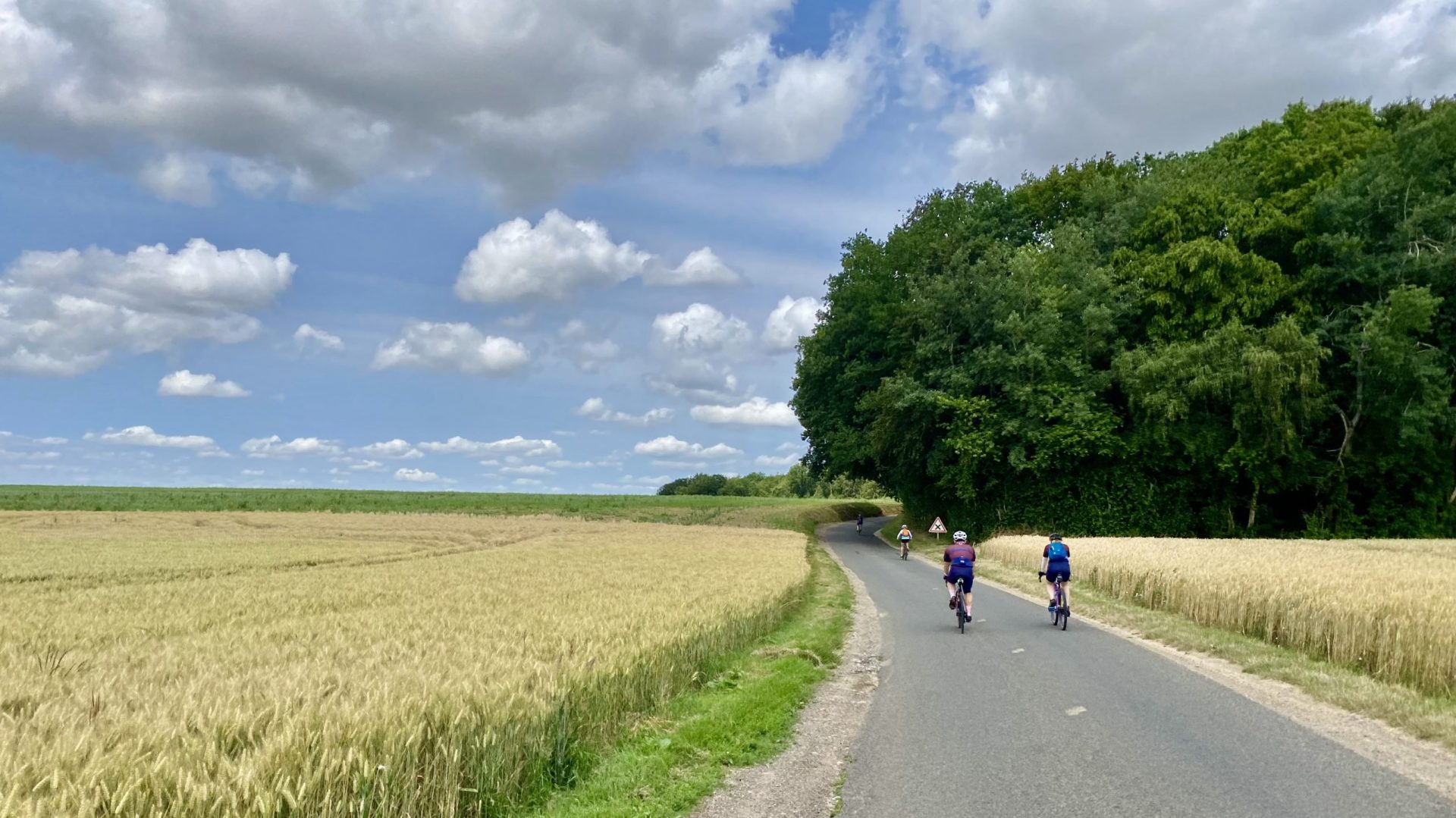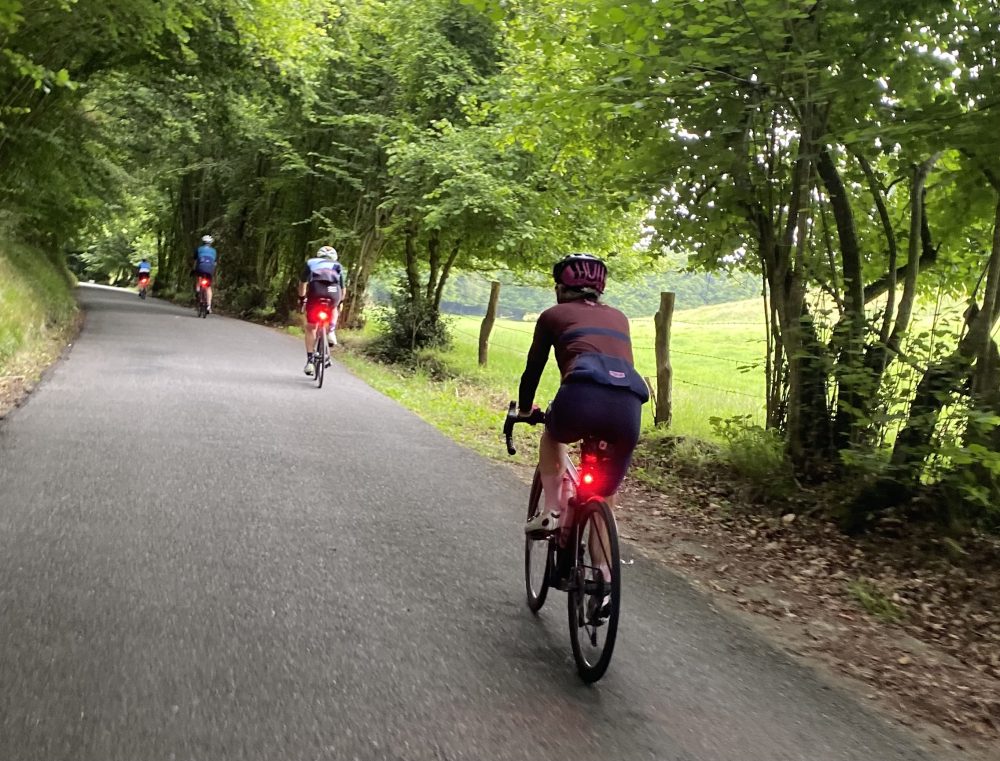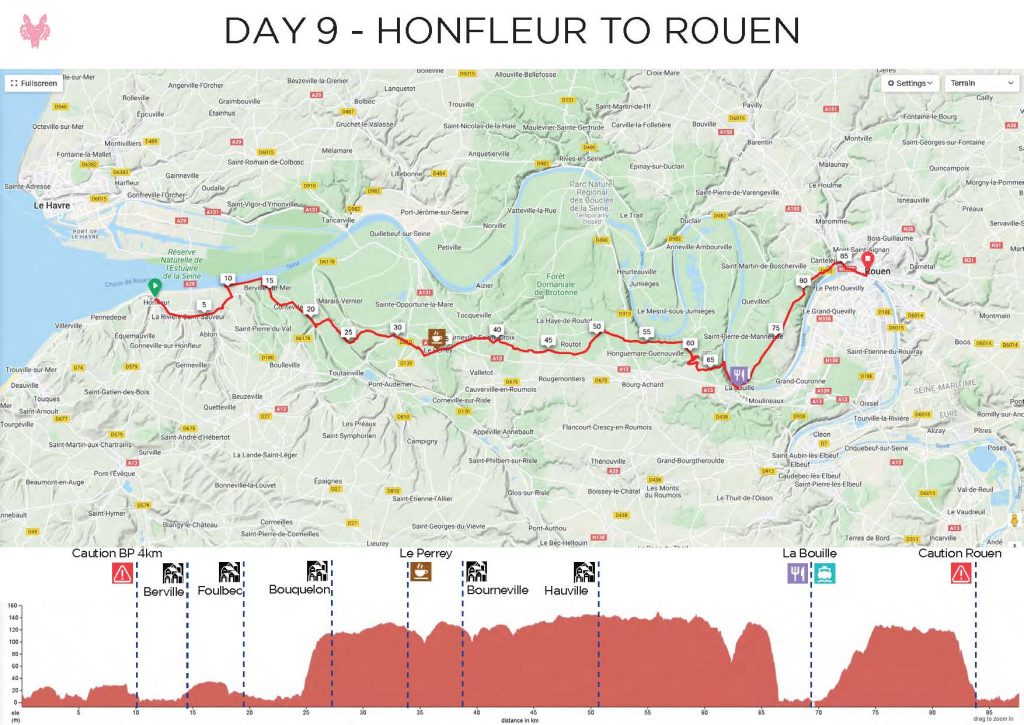
A 100.8km ride with 604 vertical metres of climbing saw leave the cobblestones of Honfleur and continue to pass through Normandy to its capital Rouen. There were some early climbs up onto the plateau but yet again we found ourselves riding through very fertile & stunningly beautiful rural landscapes. We entered the regional natural park of the “boucles de la Seine Normande”, which is little inhabited and where people traditionally farm. So we were mostly on secondary roads, with little traffic and hamlets scattered along the way. We dropped down to the ferry crossing over La Seine at La Bouille. Of course, this also flows through Paris, but being close to the sea is very navigable for larger vessels. After our picnic on the banks of La Seine, we headed for Rouen. Although we were on bike paths, heavy rain made life difficult in the last 5km.
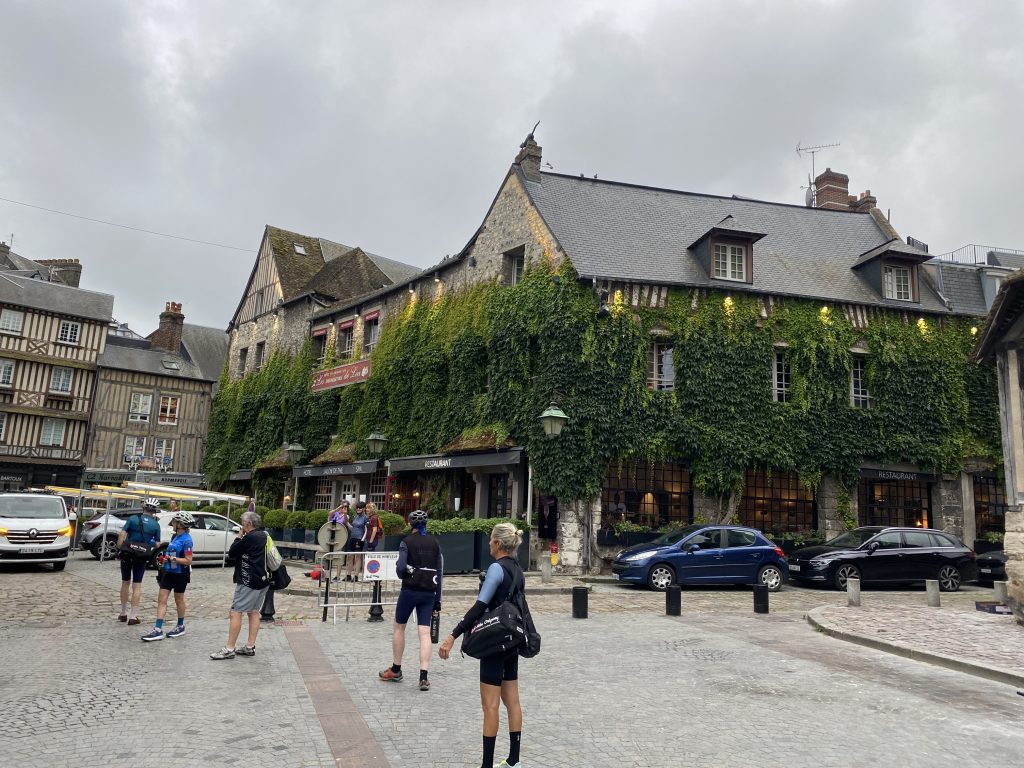
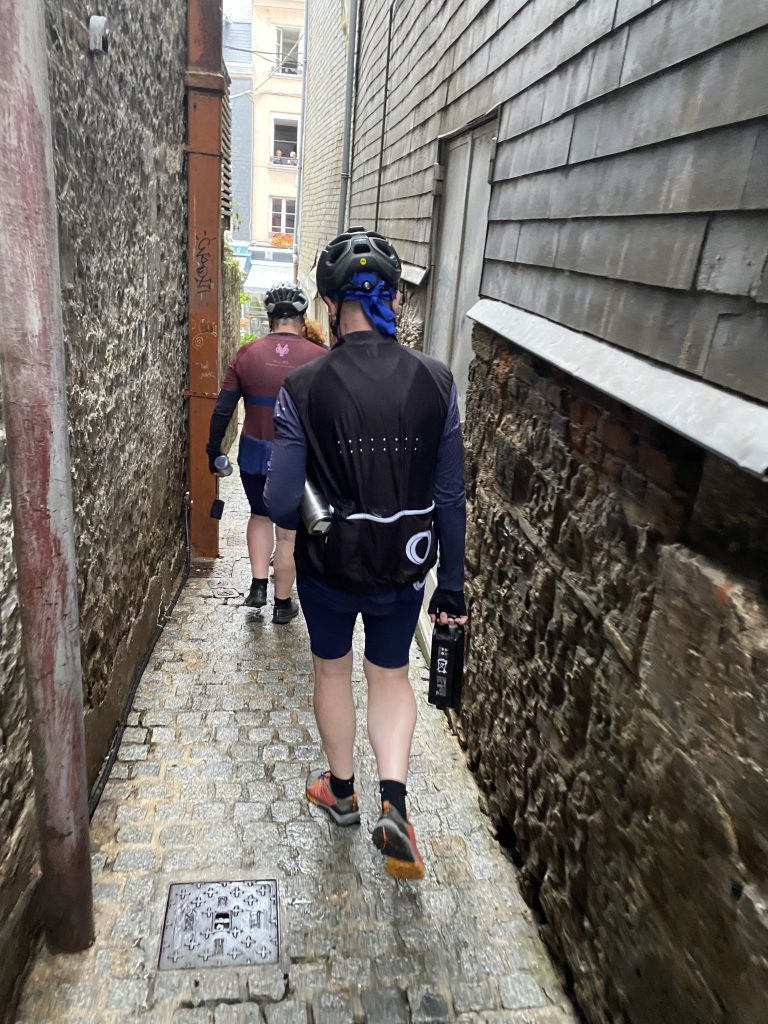







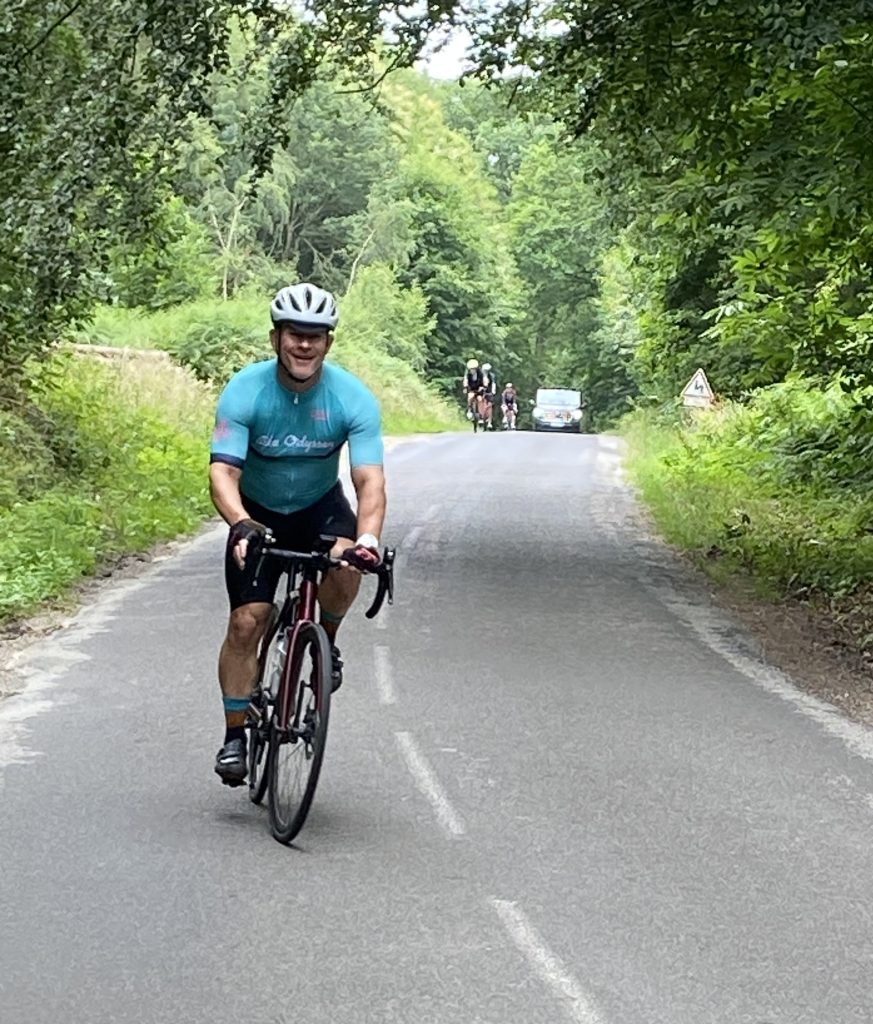








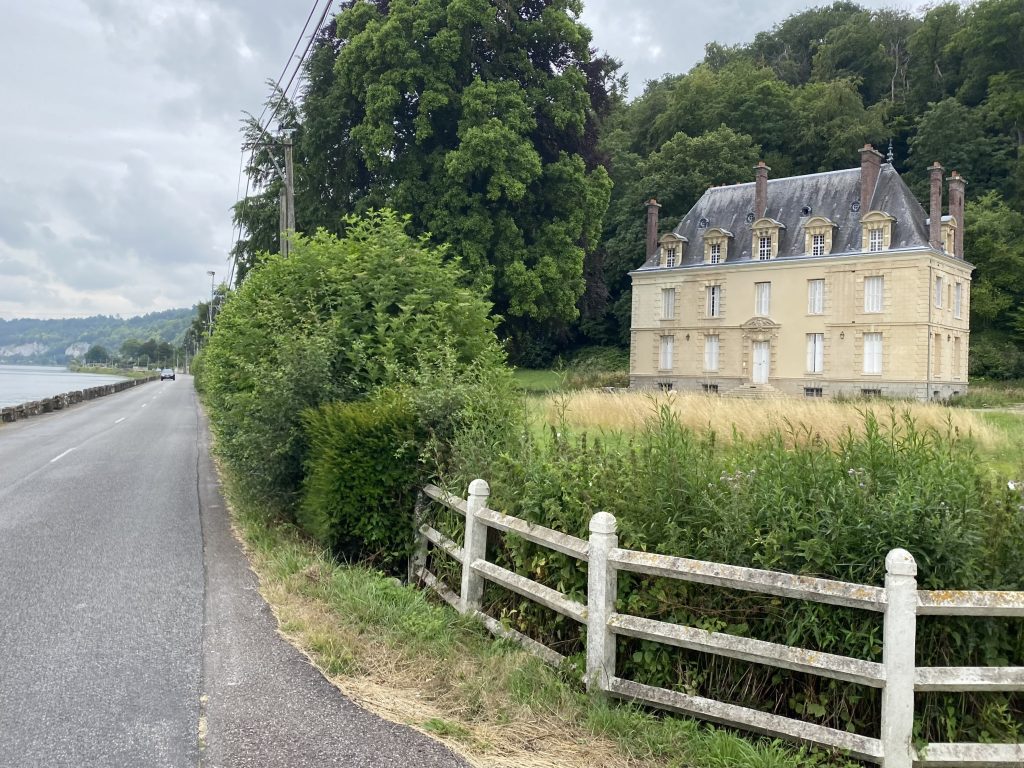










Rouen – The City
With its soaring Gothic cathedral, “the city of a hundred spires” has a beautifully restored medieval quarter, imposing ancient churches, excellent museums and vibrant cultural life. Rouen is one of Normandy’s most engaging and historically rich destinations.
The city has endured a turbulent history. It was devastated by fire and plague several times during the Middle Ages and was occupied by the English during the Hundred Years War. The young French heroine Joan of Arc (Jeanne d’Arc) was tried for heresy and burned at the stake in the central square in 1431. And during WWII, Allied bombing raids laid waste to large parts of the city, especially south of the cathedral.
Rouen – Ken Nairn
A war instigated, not by two conflicting nations but, by a leader, debt laiden, with a questionable public image, who wanted power, money, land and prestige. This is not a description of the current conflict in the Ukraine, this is Julius Caesar, one of Romes greatest generals, prior to the Gallic Wars.
Rouen has been home to many, but in 58 BC, it was a Gaulish stronghold. After Lyon, the second largest in the Gaulish region. Between 58 and 50 BC, Ceaser fought a dreadful campaign of slaughter against Gaulish all over Europe, and eventually Britain. During that time Ceaser boasted that over 1 million Gaulish had been killed. These are numbers questioned by modern historians but very useful to a man who controlled his propaganda.
After the Gallic Wars, he crossed the Rubicon with plunder, slaves and his army; the rest is history.
So Rouen is one of those cities, like London, that can’t be labelled as having only a Norman history, it has been an important Port (the 5th largest in France) for centuries.
Before William the Conqueror moved the capital of the Duke of Normandy to Caen, Rouen was the seat of power. It is still the administrative centre in Normandy. During the fighting after D-Day, it was extensively damaged, much of which has subsequently been repaired. A city to wander and explore.



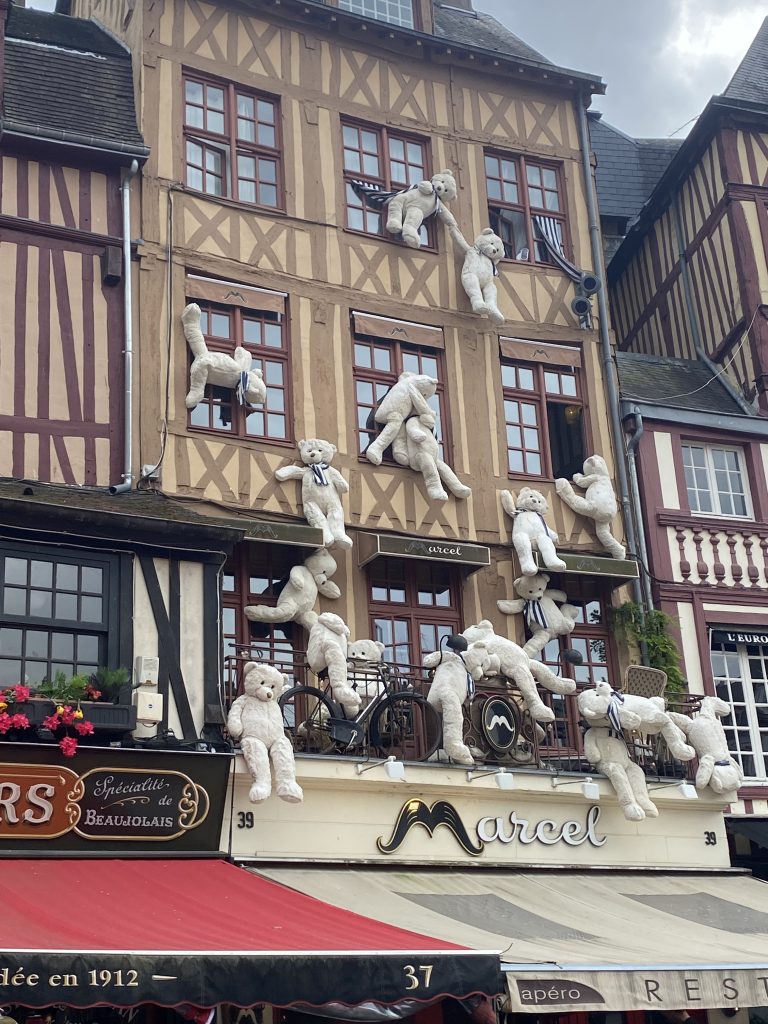


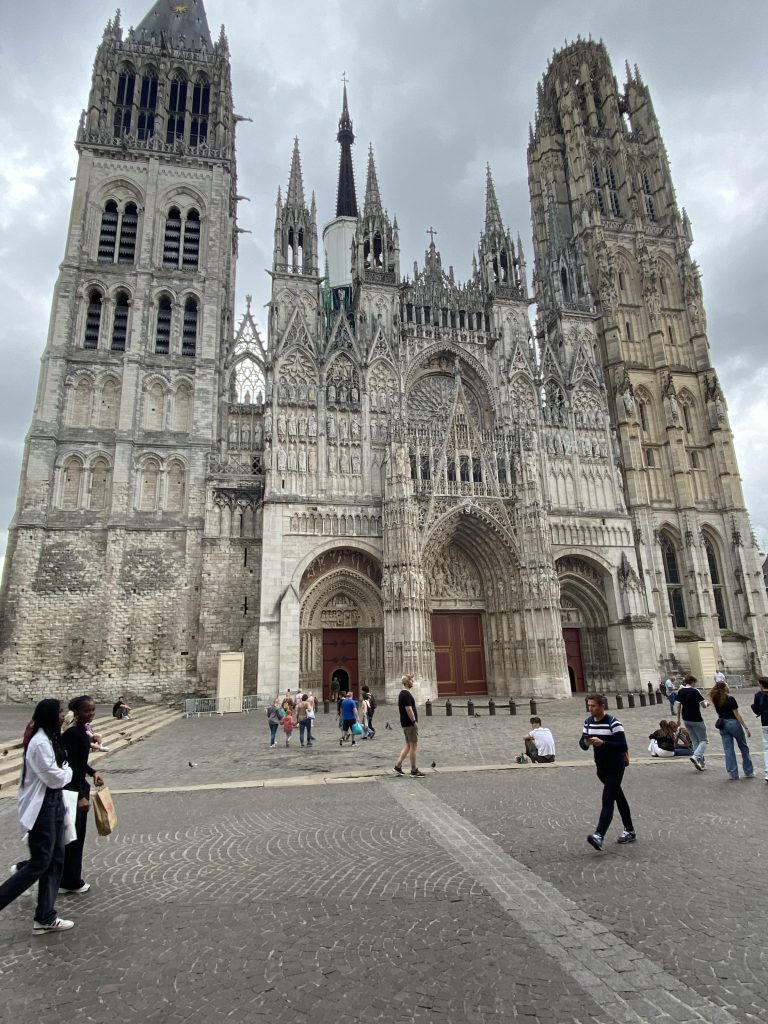


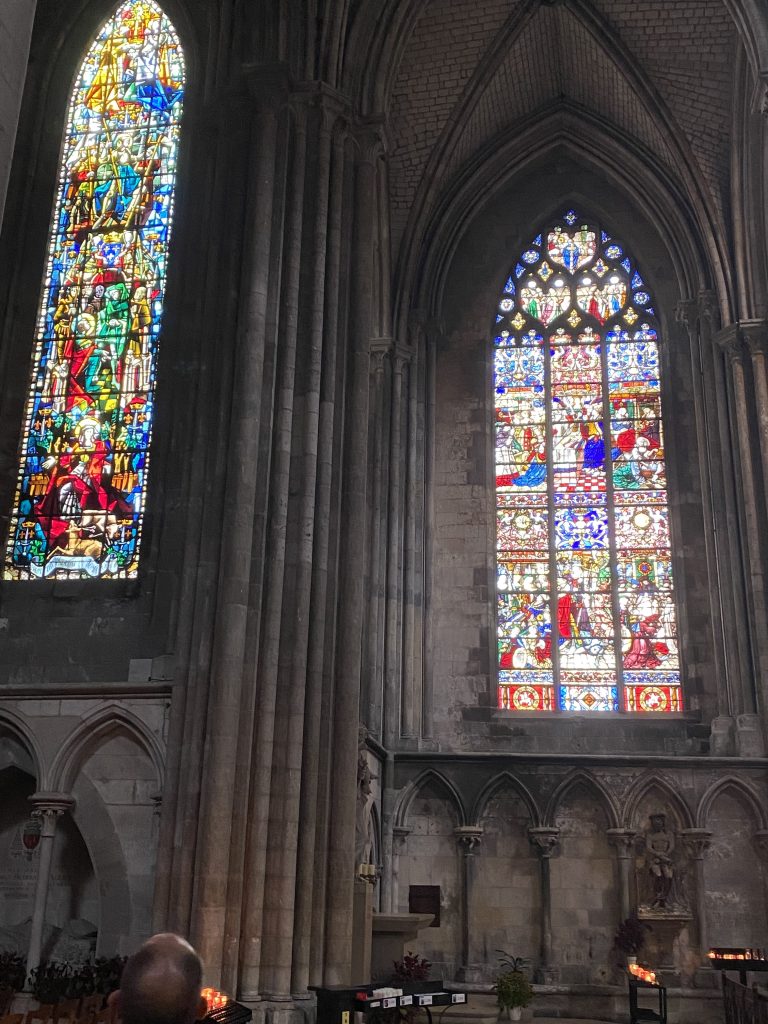


Rollo – Ken Nairn
In the United States of America those that established the Constitution fought in the Revolutionary War and led the country to independence are called the founding fathers.
The Normans have a founding father he was Rollo, yesterday when touring Rouen Cathedral, there was his sarcophagus.
In the 10th century, Mont Saint-Michel was constantly ravaged by the Normans led by Rollo. There were raids further inland, they represented a significant problem and could be dealt with in one of two ways.
1. Defeat them in battle.
2. Negotiate terms of peace.
The King of France was pragmatic, the Vikings were formidable fighters, probably huge compared to the French. They may have eventually beaten them, however, it would probably have led to a pyrrhic victory, leaving the weakened French exposed to attacks from their neighbours.
The Vikings were given the land we now call Normandy. Rollo had to swear fealty to the King of France, convert to Christianity, and be baptised.
This was no Damascus road conversion, more akin to the Medicis inveigle their way into the papacy, not for any ecclesiastical benefit, but to assist with the trade. Rollo’s conversion to Christianity did not end up with him a peacemaker, he was still partial to the slaughter of a few hundred prisoners or a raid on an English Monastery or two.
So it was fascinating to see his sarcophagus at Rouen Cathedral. He is the 38 x great grandfather of King Charles.
Jeanne de Arc





Joan of Arc was not just a hero, but a martyr and was eventually named a patron saint to a whole country, and so much of it happened here in Rouen.
Joan of Arc was tied to a stake and burnt to death on May 30, 1431, when she was just nineteen years old. It was only a year earlier that she had been captured by the English she had been fighting against, and only a year before that when she had begun her military campaign against them. She was fighting on behalf of the son of the dead French King Charles VI, who had had his throne stolen from him. The English who were controlling parts of French territory wanted to make an example of her and her execution happened in the Old Market Square of Rouen.
The Church of St Joan of Arc
Standing in the square today, the first thing you notice is the modern church that has been built in her honour. The Church of St Joan of Arc almost seems slightly out of place with its 1970s architecture, but its relevance justifies it.
The roof is supposed to represent the flames that killed her and the sweeping curves symbolise an overturned longship. Go inside and the highlight is the enormous stained-glass windows which were originally from a nearby 16th-century church that is now in ruins.
The Old Market Square
The exact site where Joan of Arc was burnt at the stake is marked by a sign these days but it’s a low-key monument for such a momentous event. In some ways, people don’t want to focus on her execution but on her life.
Although she was killed by the English authorities with the support of the Catholic Church, their decision was overturned just a generation later. Joan’s mother got permission from the Pope in 1455 to have the guilty verdict that condemned her re-examined and a year later she was ‘rehabilitated’.
Joan was beatified in 1909, and then 11 years later in 1920 she was canonised and became a saint of the Catholic Church. It was a big turnaround for someone who had been excommunicated and executed for heresy, but such was the change in attitudes.
In the centuries since the death of Joan of Arc, her story has become legendary. People all across the world have been attracted to the tale of a young peasant girl who would go on to win military battles.
